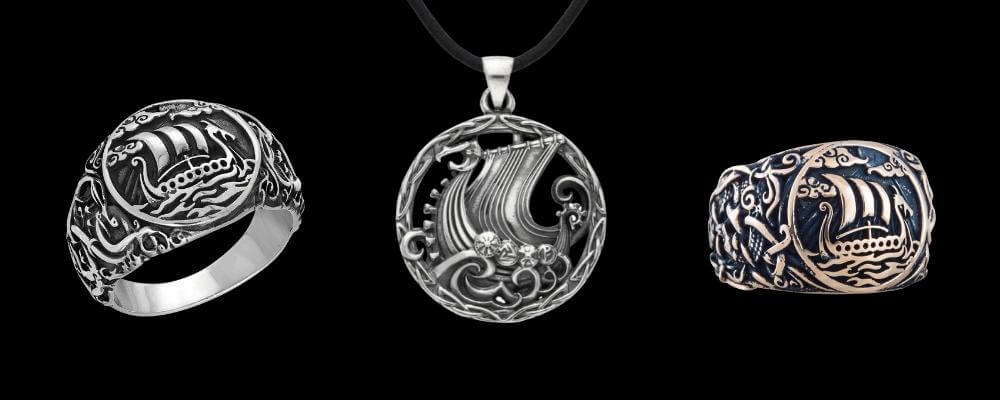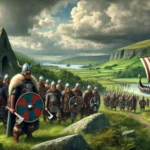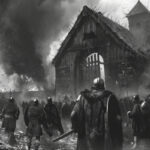The Vikings are infamous for raiding and terrorizing their neighbors in Britain and France and are known to have been active in the east around the Balkans and as far as Constantinople. But we hear very little about the Vikings in Spain and Portugal. Did the Vikings leave these nearby lands untouched?
The Vikings were active on the Iberian Peninsula between the 9th and the 11th centuries. But this history is largely obscured since this coincides with the rise of Muslim rule, which had a much more widespread and lasting impact of the formation of the area. This means that mention of the Vikings is much less prevalent in the surviving written sources, and they also do not seem to have made any settlements.
But the Vikings did leave their mark on Spain. Let’s look at what we do know about the Norsemen’s activities on the Iberian Peninsula.

Norsemen in Iberia
Several contemporary sources refer to the Vikings in Spain, but not as “Vikings”. Latin sources call them Normanni, which means Norsemen, while Arabic sources refer to them as majus¸ which means “heathen worshipers of many gods”. This term was used to refer to many pagan peoples, so it is not always clear that they are referring to the Vikings.

9th Century
The Vikings seem to have first appeared in Spain in the 9th century. Their first major raid is dated to August 844, when they sailed to Galicia with a fleet of ships with red sails after sacking Bordeaux in France.
The troop or warriors raided and plundered many of the villages along the coast of Galicia until they were finally halted in their descent by the army of king Ramilo I of Asturias.
A local legend suggests a more divine source for the salvation of the Spaniards. They suggest that when the Vikings reached the mouth of the river Masma, the local Bishop Gonzalo prayed for protection, and not long after, a storm sank a good portion of the Biking fleet.
This loss did not stop the group of raiders who are recorded as raiding around Lisbon in September on their way to Seville.
The captured this city in October, but not the central citadel, which remained under Muslim control. Instead, their threatened and terrorized the surrounding locals trying to force them to turn over the stronghold.
Eventually the Emir of Corduba, Abd al-Rahman II, sent troops that burned 30 of the Viking longships using “Greek fire”, which ignited in the water. More than 1,000 Vikings were killed, and some converted to Islam to be spared. Seville and the surrounding area reclaimed, but rebuilding took many years.
Viking activity here may have triggered the placement of a shipyard in Seville, which lead to the creation of a Spanish fleet.
A single band of adventurers reportedly returned to Spain in 859-862 and raided along the coast until they passed through Gibraltar and raided the small Moroccan state of Nekor, where they reportedly defeated a Moorish army. But this story may be more fact than legend, as some claim that these raiders were none other than Hastein and Bjorn Ironside.
This period of activity seems to have ended when the Vikings of Denmark, who were probably also the source of the raiders, sent an Embassy to Abd al-Rahman II. He responded by sending his favorite court poet, The Gazelle, to the court of King Harken in Denmark.

10th Century
While minor raids no doubt continued during the intervening century, the next major period of Viking activity in Spain seems to have been in the second half of the 10th century.
Two accounts of the death of the famous Viking Erik Bloodaxe suggest that he died in Spain, though many others recount that he died in England. While he probably didn’t die in Spain, that it was suggested as a plausible story suggests that the Vikings were active in the region.
Many sources for the 960s and 970s refer to Viking raids on monasteries and villages around Galicia, Al-Andalus, and Lisbon. One source suggests another attack on Lisbon in 966 with 28 ships.
In 968, a group of 100 ships led by the Viking Gunderer tried to raid the area of Iria and made trouble in the area for three years before being defeated by the forces of an unknown Gonzales Sanchez. In the aftermath, Bishop Sisnando fortified the city of Santiago de Compostela.
The Vikings may have tried to establish a firmer foothold in the Iberian Peninsula at this time, as they did in Britain and France, as one charter from 996 uses a Norse fortress as a local landmark.
A series of early medieval rock castles built on hills and mountains of the Galician coast offering broad vision out over the ocean may have been built in response to the continuing Norse raids.

11th Century
The Vikings were still making their presence known in Iberia in the 11th century, with known Viking raids recorded in the Chronicon Lusitanium for 1008 and 1016.
But at this stage, they seem to have been “passing through” rather than making Spain a target. For example, the Heimskingla suggests that Olaf II of Norway raided the coast on his way to the Holy Land in 2015.
Another source suggests that a few years later, a Viking crew kidnapped a woman named Meitilli and her daughter for ransom. They received a cloak, a sword, a short, three pieces of linen, a cow, and some salt. This is the ransom of passing sailors rather than a raiding force.
Similarly, a charter of King Alonso V of Leon in 1024 merged the bishopric of Tui into that of Santiago because the bishop and other senior officials of Tui were taken by the Vikings as slaves.
But while Viking raids may have been less organized in this period, they were still troublesome enough that in 1055, Bishop Cresconius of Iria exempted the people from resting on Sundays in the case of a Saracen or Viking attack.

Viking Legacy
As can be seen, the history of the Vikings in Spain is patchy, pieced together by mentions in charters and similar documents. This is because the histories written in this period focus on the Saracen domination of Spain.
But there is an increasing interest in the Viking influence on the country. While they may not have established settlements and infiltrated the ruling classes as they did in England and France, the Vikings certainly seem to have had an impact. Many fortifications seem to have been a response to Viking raids, and the Spanish fleet of the era, which would later explore the globe, seems to have begun as a response to Viking raiders.
Locals also mark the Spanish resistance to the Vikings on the first Sunday of August, when volunteers from the community dress up and sail a replica 11th-century Viking longboat down the river Ulla to the town of Catoira. There they meet townsfolk, who successfully fend them off. The affair ends with both sides covering themselves in wine to represent blood and feasting on local Galician delicacies.
This is the kind of celebration of which the Vikings would have approved.
Find pieces celebrating the Viking longships in the VKNG Collection.








